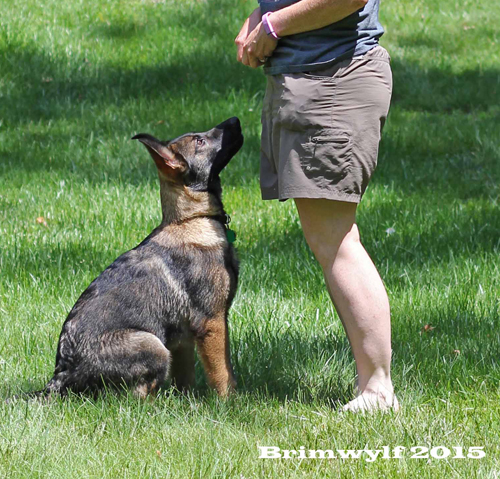Sit, Down and Stand
Once you have good focus, you can start to work on more complicated commands. The easiest way to teach these exercises is by luring. The problem with luring, is that you have to eventually fade the hand movement, and since dogs are more in tune to movement than sound, this can take a while. To teach the sit, a piece of food held over the head lifts the nose up, and the rear naturally drops down - say the command, as the dog takes up the position. To teach the down, close your hand around the food and drop your hand to the floor, to encourage the dog to take up the down position. Open your hand and feed the dog once in the correct position.
The stand can be taught by holding the food at nose level in front of the dog and move your hand down a little and towards the dogs' chest. Remember to mark and feed as soon as he stands up. Teaching the stand this way stops the dog from stepping forward into the stand.
You can also teach these exercises by gently maneuvering the dog in to position with your hands, but again this "help" will need to be faded. Once you have a good sit in lots of different places, you could insist on the sit, by placing your hand under the dogs chin, and lifting so the dog has to sit. This is a mild form of compulsion and you may or may not want to do this. If you do not want to "back up" commands, you must spend a lot longer proofing them in different environments. This requires a good deal of patience. Very sensitive dogs will need the patience part of this, a willful puppy with a low desire for food may need more hands on training, and probably will not suffer for that. In gauging what you need to use, err on the side of less. More patience and more shaping lead to confident happy pups that like to work (until they get to that lovely teenage stage!).
